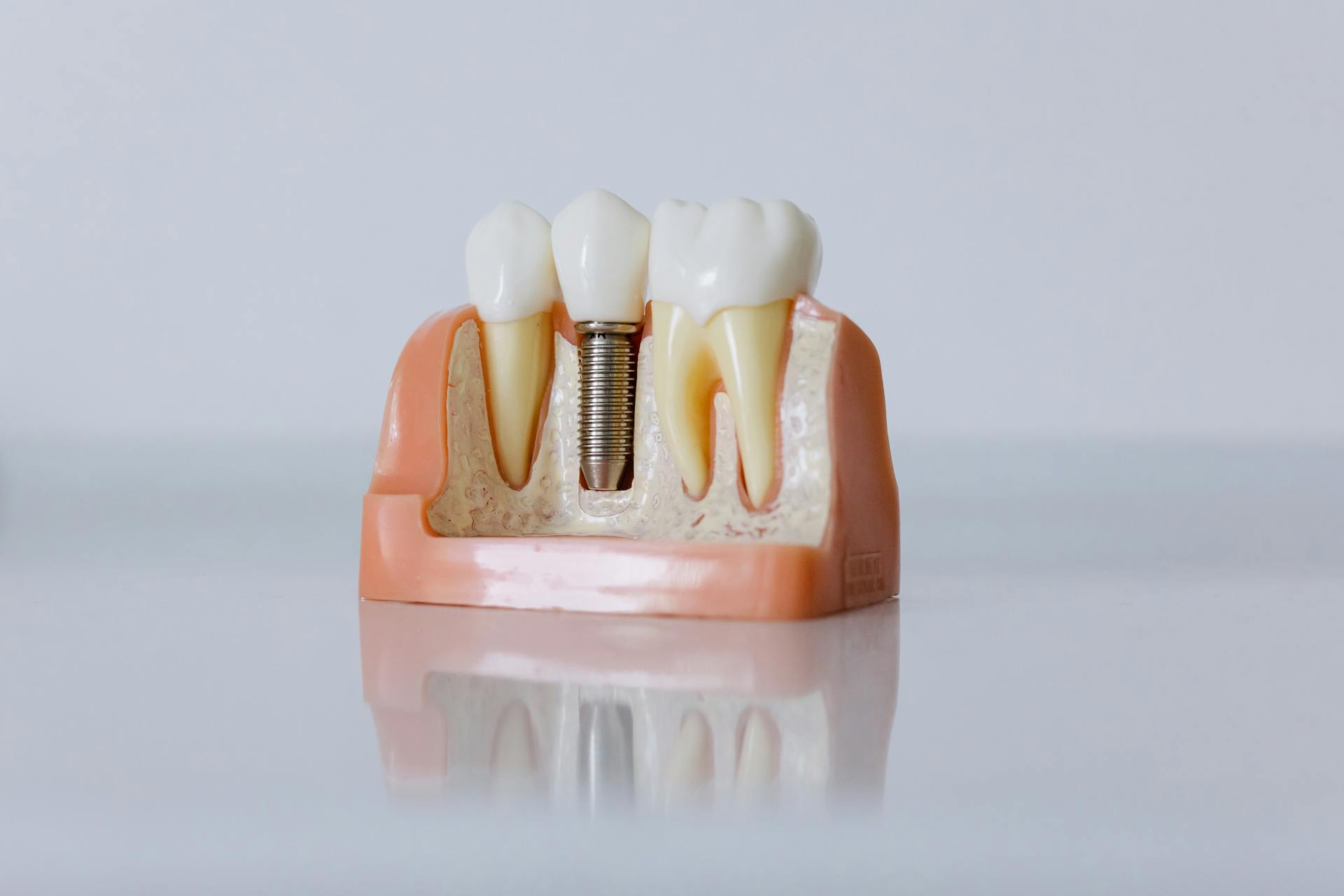
Dental implants have emerged as a transformative option for seniors who wish to restore their smiles and enhance their quality of life. This article delves into key information regarding dental implants, including their functionality, significance for seniors, and the different types available.
You will discover the benefits and risks associated with dental implants for seniors, the placement process, and recovery tips specifically designed for older adults. Additionally, we will explore alternatives such as dentures and bridges to assist in making informed decisions about oral health.
What Are Dental Implants?

Dental implants represent a groundbreaking solution in dentistry, specifically intended to replace missing teeth and restore oral function. They offer a durable and aesthetically pleasing alternative to traditional methods of tooth replacement, such as dentures and bridges.
Utilising titanium implants that fuse with the jawbone, this surgical procedure provides a robust foundation for prosthetic teeth. This not only improves dental care but also enhances the overall quality of life for patients who are in search of effective dental restoration.
How Do Dental Implants Work?
Dental implants operate through a process known as osseointegration, where the titanium implant fuses with the jawbone, creating a stable and secure foundation for prosthetic teeth.
This innovative surgical procedure begins with a comprehensive assessment, which typically includes an oral examination and dental X-rays, to determine the most appropriate treatment plan for each individual patient.
Following this evaluation, the dental professional may suggest additional procedures, such as bone grafting, if the jawbone density is insufficient to support the implants. Adequate bone density is essential; without it, the osseointegration process could be compromised, potentially leading to implant failure.
Once the jawbone is confirmed to be healthy enough, the implant is surgically inserted into the jaw. Over the next few months, a gradual healing process occurs as the implant merges with the bone, providing a solid anchor.
This integration is crucial for ensuring the longevity and functionality of the implants, making the understanding and assessment of jawbone health a vital component in the successful placement of dental implants.
Why Are Dental Implants Important for Seniors?
Dental implants hold significant importance for older adults, as they provide a reliable solution for tooth replacement that greatly enhances oral health and overall quality of life.
The ageing population frequently encounters dental challenges, such as tooth loss and gum disease. In this context, dental implants serve as an effective means to restore chewing function, maintain bite alignment, and improve aesthetics.
Ultimately, this leads to better nutrition and increased self-esteem among elderly individuals.
How Do Dental Implants Improve Oral Health in Seniors?
Dental implants significantly enhance the oral health of older adults by offering a stable and functional solution for missing teeth. This improvement leads to better chewing function and promotes more nutritious eating habits.
When older adults maintain proper care for their implants, they can enjoy improved gum health and a reduced risk of oral diseases, making implants a vital part of a comprehensive oral care routine.
Additionally, implants play a crucial role in preserving the integrity of the jawbone by preventing bone loss that often accompanies missing teeth. This preservation is essential for overall oral health and helps maintain facial structure, thus preventing sagging or changes in appearance.
Regular dental visits are important, as they allow dentists to monitor the condition of the implants and the surrounding tissues. By adhering to optimal dental hygiene practices, including daily brushing and flossing, older adults can significantly enhance the longevity of their implants and promote healthy gums.
This care ensures that they can enjoy their restored smiles for many years to come.
What Are the Benefits of Dental Implants for Seniors?
The advantages of dental implants for seniors go well beyond simply replacing missing teeth; they play a significant role in enhancing overall quality of life, restoring aesthetics, and offering long-term solutions for tooth loss. With an impressive success rate and durability, many seniors experience high levels of satisfaction following the procedure, leading to improved self-esteem and more fulfilling social interactions.
Dental implants are designed to mimic the function of natural teeth, allowing seniors to enjoy their favourite foods without the discomfort that often accompanies dentures. Research shows that over 90% of seniors who choose dental implants notice a significant improvement in their ability to chew, which in turn supports better nutrition and overall health.
Additionally, testimonials from satisfied patients indicate that many feel a renewed sense of confidence in social situations. Many share how they have returned to activities they once avoided due to embarrassment over missing teeth. This psychological boost can significantly enhance one’s lifestyle, underlining how dental implants are about more than just appearance—they genuinely contribute to improved well-being.
What Are the Risks of Dental Implants for Seniors?
While dental implants present a range of benefits, it is essential for seniors to understand the potential risks associated with this surgical procedure, including the possibility of infection and complications during recovery. Being aware of these dental risks is vital for creating a comprehensive treatment plan, which should include careful patient education and consultation with a qualified implant dentist.
Inadequate bone density can create significant challenges, resulting in complications such as improper bite alignment or even the failure of the implant. Additionally, any existing health conditions, medications, or lifestyle factors can affect the healing process, making a thorough pre-treatment evaluation crucial.
By providing a detailed patient history, seniors can assist their dental providers in identifying risk factors early on, ensuring a personalised approach to treatment. This proactive assessment not only increases the chances of a successful implant placement but also leads to a more comfortable and quicker recovery period.
What Are the Different Types of Dental Implants?

There are various types of dental implants available, each tailored to meet the specific needs and preferences of patients.
The two most commonly used types are:
- Endosteal implants, which are placed directly into the jawbone,
- Subperiosteal implants, which rest on top of the bone beneath the gum tissue.
Furthermore, All-on-4 implants offer a fixed solution for replacing an entire arch of teeth, highlighting the advancements in dental technology and the range of solutions available for different dental requirements.
1. Endosteal Implants
Endosteal implants are the most commonly used type of dental implants, specifically designed for surgical placement directly into the jawbone. This approach provides a strong and stable foundation for replacement teeth.
For optimal integration, these implants require sufficient jawbone density, and their impressive success rate makes them a reliable choice for numerous patients.
These implants are especially beneficial for individuals seeking a permanent solution for missing teeth. They promote natural bone health by stimulating the jawbone and preventing further deterioration.
The integration process involves the gradual bonding of the implant with the jawbone, which is essential for ensuring both longevity and stability.
Ideal candidates for endosteal implants typically have healthy gums, adequate bone quality, and a commitment to maintaining proper oral hygiene.
Recent advancements in dental technology have led to improved techniques that enhance patient outcomes, making endosteal implants a preferred option for those aiming to restore their confident smiles.
2. Subperiosteal Implants
Subperiosteal implants serve as a viable alternative for patients who lack sufficient jawbone density for endosteal implants. These implants are placed beneath the gum tissue but above the jawbone, providing a stable anchoring point for prosthetic teeth while reducing the need for additional surgical procedures, such as bone grafting.
These implants are especially advantageous for individuals who have experienced significant jawbone loss due to conditions such as periodontal disease, injury, or prolonged tooth loss. The placement process begins with creating an impression of the jawbone, which is then used to fabricate a custom implant that fits securely against the bone.
During the surgical procedure, a flap of gum tissue is lifted to position the implant, which is specifically designed to contour to the patient’s unique anatomy.
Subperiosteal implants are often preferred in situations where patients wish to avoid the discomfort and recovery time associated with more invasive procedures that require bone augmentation. This makes them a practical choice for enhancing quality of life and restoring functionality.
3. All-on-4 Implants
All-on-4 implants represent a groundbreaking dental solution that enables the restoration of a full arch of teeth using just four strategically placed implants. This approach offers a cost-effective and less invasive option for seniors seeking comprehensive dental rehabilitation.
It employs advanced dental technology to optimise bone integration and support, which has led to its popularity among dental specialists.
By leveraging the natural structure of the jawbone, the All-on-4 technique significantly reduces the need for bone grafting, which is often a requirement in traditional implant methods. Once the implants are placed, patients can enjoy immediate provisional dentures, resulting in enhanced aesthetics and functionality almost straight away.
This method not only restores speaking and chewing capabilities but also boosts self-confidence with a natural-looking smile.
Additionally, the reduced recovery time and lower overall treatment costs make All-on-4 implants an attractive option for those looking to improve their oral health without undergoing extensive dental procedures.
How Are Dental Implants Placed in Seniors?

The placement of dental implants in seniors involves a meticulously structured process, starting with an initial consultation and treatment planning. This stage is crucial, as it ensures a comprehensive assessment of the patient’s oral health.
During this planning phase, a thorough oral health evaluation is conducted, the patient’s medical history is reviewed, and options for anaesthesia are discussed. This approach prioritises the comfort of the patient throughout the surgical procedure.
1. Initial Consultation and Treatment Planning
The initial consultation for dental implants plays a vital role in the treatment process. During this meeting, a comprehensive oral examination and dental X-rays are conducted to assess the patient’s oral health and determine whether dental implants are an appropriate treatment option.
This thorough evaluation enables the dentist to develop a personalised treatment plan that aligns with the individual’s specific needs and goals.
Plus visual assessments, gathering a detailed medical history is essential. This information helps the dentist understand any underlying conditions or medications that may affect the procedure and the healing process.
Furthermore, the evaluation may involve discussions about bone density and gum health to ensure there is sufficient support for the implants.
The insights gained from these assessments give the power to dental professionals to identify potential risks and address them proactively. This approach ultimately enhances the likelihood of a successful implant procedure and promotes long-term oral health.
2. Implant Placement Surgery
The implant placement surgery is a surgical procedure in which titanium implants are precisely inserted into the jawbone. This is done using local anaesthesia or sedation dentistry options to ensure that the patient remains comfortable throughout the process. The procedure typically takes place in a dental clinic under the care of specialised dental surgeons, and it is usually completed in a single visit.
Before the surgery, patients can expect to have a thorough consultation where the oral surgeon evaluates their dental health and develops a personalised treatment plan. The procedure itself usually begins with administering the chosen form of anaesthesia—either a local anaesthetic for targeted numbness or sedation to help the patient feel more at ease.
During the surgery, a small incision is made in the gum tissue to expose the jawbone, allowing for the accurate placement of the titanium implants. While patients may feel some pressure during the procedure, they should not experience any pain due to effective anaesthesia management.
After the surgery, post-operative care instructions will be provided to promote healing and support the success of the implants.
3. Healing and Osseointegration
Following the placement of dental implants, healing and osseointegration are critical stages where the titanium implants bond with the jawbone, providing stability for the prosthetic teeth. The recovery time can differ from one patient to another, but proper dental care and maintenance during this period are essential to minimise the risk of infection and ensure the long-term success of the implants.
During this phase, the body initiates a biological response that allows the bone to grow around the implant, creating a secure foundation. This intricate healing process not only reinforces the implant but also has a significant impact on the overall stability of the dental restoration.
Regular follow-ups with the dental professional are crucial; these appointments allow monitoring of progress, performance of necessary cleanings, and prompt addressing of any issues that may arise.
By adhering to personalised aftercare instructions, patients can further enhance the success of their implant journey, ensuring both function and aesthetics are optimised for a lasting and beautiful smile.
4. Placement of Abutment and Prosthesis
After successful osseointegration, the next step is the placement of an abutment, which serves as a connection between the titanium implant and the prosthetic teeth. This step is essential for restoring both function and aesthetics.
Once the abutment is in place, custom dental crowns or prostheses are created to match the surrounding teeth, ensuring a natural look that enhances patient satisfaction.
This process is critical, as the abutment provides a stable foundation for the precise attachment of the dental crown. Creating a custom crown goes beyond just functionality; it plays a significant role in the overall appearance of a patient’s smile.
A well-designed crown should harmonise with the existing teeth, considering important factors such as size, shape, and colour. Thus, achieving a balance between aesthetics and functionality is crucial. This ensures that the final restoration not only performs effectively but also boosts the patient’s confidence and comfort in their daily life.
What Is the Recovery Process for Dental Implants in Seniors?

The recovery process for dental implants in elderly patients is essential for ensuring the success of the procedure. It requires careful post-surgery care and a commitment to maintaining good oral hygiene practices.
Patients should attend follow-up appointments to monitor their healing progress, receive advice on necessary dietary adjustments, and address any potential discomfort during this important recovery phase.
1. Post-Surgery Care
Post-surgery care plays a vital role in the successful recovery of dental implants. It involves careful monitoring of the surgical sites to minimise the risk of infection and facilitate healing. Patients should adhere closely to their dentist’s instructions regarding dental maintenance, which includes taking prescribed medications and following recommended oral hygiene practices throughout the recovery period.
It is equally important for individuals to remain vigilant for any signs of complications, such as excessive swelling, persistent pain, or unusual bleeding. These symptoms may signal issues that require immediate attention.
Gently rinsing with a non-alcoholic mouthwash can help maintain oral cleanliness, while avoiding strenuous activities and hard foods can prevent any disruption at the surgical site.
As healing progresses, it becomes essential to establish a consistent dental hygiene routine, which includes brushing gently around the implants and attending scheduled follow-up appointments. This approach ensures that the journey towards a healthy and functional smile proceeds as smoothly as possible.
2. Diet and Oral Hygiene During Recovery
During the recovery period following dental implants, it is crucial to maintain a balanced diet and adhere to proper oral hygiene practices to support healing and restore chewing function. Patients are encouraged to start with soft foods initially and then gradually reintroduce regular dietary items as healing progresses. It is equally important to maintain a thorough oral care routine.
This thoughtful approach not only promotes optimal healing but also minimises discomfort during the early stages of recovery. Including nutrient-rich options such as smoothies, yoghurt, and mashed vegetables can provide essential vitamins and minerals that aid in the recovery process.
Practising good oral hygiene—like gentle brushing and using an antimicrobial mouthwash—is vital for preventing infection and promoting tissue healing. Additionally, regular dental check-ups during this time are recommended, allowing for monitoring of the healing process and making necessary adjustments to care, thus ensuring a complete and swift recovery.
3. Follow-up Appointments
Follow-up appointments are a crucial part of the recovery process for dental implants. They allow dentists to monitor the patient’s oral health, assess how well the healing is progressing, and provide ongoing education about caring for the implants.
Regular check-ups are essential for addressing any potential issues promptly, which significantly contributes to the long-term success of the dental procedure.
These visits also create a valuable opportunity for patients to ask questions and clarify any uncertainties they might have about maintaining their new dental fixtures. Consistent follow-up is beneficial in detecting complications early, thereby preventing more serious problems down the line.
Patients receive personalised advice on proper hygiene practices, dietary considerations, and lifestyle changes that can impact the stability of their implants.
By establishing a strong line of communication between dental professionals and patients, these appointments are instrumental in safeguarding not only the integrity of the implants but also the overall health of the patient’s mouth.
What Are the Alternatives to Dental Implants for Seniors?

Dental implants provide many benefits for tooth replacement; however, there are several alternatives that seniors may consider, such as dentures, dental bridges, and mini implants.
Each of these options comes with its own advantages and considerations, enabling patients to select a solution that aligns with their specific needs and preferences.
1. Dentures
Dentures are a widely accepted dental solution for seniors seeking effective tooth replacement options. They provide a removable alternative that not only restores the aesthetics of a smile but also enhances chewing functionality. While dentures are generally more affordable than dental implants, it is important for patients to be aware that some discomfort and adjustments may be necessary to achieve an optimal fit.
There are various types of dentures available, including complete and partial options, each tailored to different levels of tooth loss. Complete dentures are typically used when all the teeth are missing, whereas partial dentures are more suitable for individuals who still have some natural teeth remaining.
The advantages of dentures go beyond mere appearance. They play a vital role in maintaining facial structure and ensuring proper nutrition by facilitating easier chewing. However, there are some drawbacks to consider, such as the potential for slippage, challenges in speaking, and the requirement for regular maintenance, all of which can impact patient comfort.
Ultimately, selecting the appropriate type of dentures can have a significant influence on oral health, enhancing confidence and contributing to an improved quality of life.
2. Bridges
Dental bridges serve as an effective tooth replacement solution for seniors by anchoring artificial teeth to adjacent natural teeth. This approach effectively fills gaps and restores dental aesthetics, making it a popular choice among patients seeking a fixed solution, which often leads to greater satisfaction compared to removable options like dentures.
Beyond merely restoring functionality for activities like chewing and speaking, dental bridges play a crucial role in maintaining facial structure. When a tooth is lost, the surrounding teeth can begin to shift, resulting in changes to one’s bite and overall appearance.
By stabilising the alignment of teeth, bridges help create a more natural smile and can significantly boost self-confidence.
The materials used in dental bridges, such as porcelain, can be carefully matched to the shade of one’s natural teeth, ensuring that this solution is both practical and aesthetically pleasing. Overall, dental bridges provide a durable and effective means of enhancing oral health and beauty.
3. Mini Implants
Mini implants represent a less invasive alternative to traditional dental implants, providing an effective solution for patients with limited jawbone density or for those who desire a quicker recovery time. These smaller implants can offer stability for dentures or act as individual tooth replacements, making them an appealing option for elderly patients.
These implants are particularly suited for individuals who may have experienced bone loss or who cannot undergo more extensive surgical procedures due to age or health concerns. Generally, mini implants require only local anaesthesia, which helps to reduce both the risks and recovery time associated with more invasive options.
While mini implants come with significant advantages, such as improved comfort and enhanced chewing ability, it’s important to recognise their potential limitations. Their smaller size may not be appropriate for all patients, especially those requiring extensive restoration work.
Therefore, understanding the specific oral health needs of elderly patients is essential in evaluating the suitability and effectiveness of mini implants as a reliable dental solution.
Frequently Asked Questions
What are dental implants for seniors?
Dental implants for seniors are a type of tooth replacement option that involves surgically placing a small titanium post into the jawbone to act as an artificial tooth root. This is then topped with a custom-made dental crown to replace missing teeth.
Who is a good candidate for dental implants as a senior?
Generally, any senior who is in good overall health and has enough jawbone to support the implant is a good candidate for dental implants. However, a thorough evaluation by a dentist is necessary to determine the best course of treatment for each individual.
What are the benefits of dental implants for seniors?
Dental implants for seniors offer a number of benefits, including improved ability to chew and speak, increased confidence and self-esteem, and preservation of jawbone and facial structure. They also have a high success rate and can last a lifetime with proper care.
What is the recovery process like for dental implants for seniors?
The recovery process for dental implants involves some discomfort and swelling in the days following surgery, but this can usually be managed with pain medication. It is important to follow post-operative instructions and maintain good oral hygiene to ensure proper healing.
How long does the dental implant process take for seniors?
The length of the dental implant process for seniors can vary depending on individual circumstances. On average, the entire process, from initial consultation to final restoration, can take anywhere from 3-9 months. However, this timeline may be shorter for certain cases.
Are dental implants covered by insurance for seniors?
In most cases, dental implants are not fully covered by insurance for seniors. However, some insurance plans may cover a portion of the cost. It is important to check with your insurance provider and discuss payment options with your dentist to determine the best course of action.






